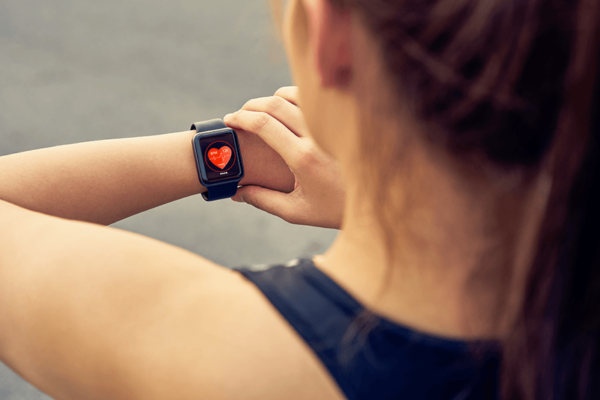With the rise of home health electronics, many people own a bioelectrical impedance analysis (BIA) scale or handheld device to monitor body composition at home. Commercial BIA devices provide a relatively simple, inexpensive, and noninvasive technique to measure body composition. BIA devices work by sending a very low, safe electrical signal through regions of the body between plate electrodes; BIA scales do this through the feet whereas handheld devices go through the arms. The electrical signal passes quickly through water that is present in hydrated muscle tissue, but it meets resistance when it contacts fat tissue. The resistance, known as impedance, is measured and input into equations to calculate body composition, hydration status, and even bone density. Taking the measurement is easy, quick, and painless – but are the results accurate compared to industry gold standards?
Commercial BIA devices differ from one another in a variety of ways including body segments utilized for analysis, electrode contact points, body fat prediction equations, and cost.
Consequently, they can vary in their reliability and validity for different populations. For example, BIA scales only send a current through your feet and into your legs, missing out on a large portion of your body. Similarly, handheld devices only send a current through your hands and across your arms and chest. This can lead to over or underestimation of body fat, depending on one’s body type and gender. Also, depending on the specific equations used by each BIA scale, body fat results may not be as accurate for certain populations. Not all equations are the best fit for specific ethnic groups or body sizes, and most consumer devices use proprietary equations and do not directly display measured impedance.
A recent study conducted at San Francisco State University found that a consumer BIA scale had an error of ± 4.4% when compared to the industry gold standard of hydrostatic weighing. In addition, the scale underestimated body fat in males by an average of 2%. The consumer scale was found to be incredibly reliable both between days and between weeks, suggesting it is a reliable at home device. Further research needs to be done to investigate how sensitive it is to tracking changes in body composition. It is likely that the underestimation of male participants was due to gender differences in fat distribution. Males more commonly carry fat around the abdomen, which the foot-to-foot BIA scale used in the study may not have adequately registered. Alternatively, the specific equation used in the scale may not have sufficiently accounted for the fat distribution in males. Current research agreed with the study findings, revealing that BIA devices typically have a larger error range, ±3.5-4%, and become less accurate in individuals with higher BMIs. Additionally, hydration status of the individual can affect the measurement. To account for this and to ensure the most accurate results when tracking body composition over time, measurements should be taken at the same time of day under similar conditions. Thus, the accuracy of body fat measurements using regional BIA devices should be interpreted with caution.
To make better use of an at home BIA device, consider occasionally having your body composition assessed using hydrostatic weighing. This industry gold standard method for measuring body fat percent, with an error of ±1-2%, costs around $50 per test. Testing requires a trained technician and can be found at certain fitness clubs or local universities, including San Francisco State University. Measurements from gold standard methods will give a more accurate portrayal of your body composition, and an idea of how far off an at home BIA scale is for future use. The results from body composition testing can be used to identify health risks, personalize your exercise program or evaluate how well your current exercise and nutrition program is working for you, so it is important they are accurate.
References:
American College of Sports Medicine. Guidelines for Exercise Testing and Prescription. 9 th ed. Lippincott, Williams, and Wilkins, Baltimore, 2013.
Heymsfield, S.B., Wang, Z., Baumgartner, R.N., & Ross, R. (1997). Human body composition: advances in models and methods. Annual Review of Nutrition, 17: 527-58.
Fields, D.A., Goran, M.I., & McCrory, M.A. (2002). Body-composition assessment via air-displacement plethysmography in adults and children: a review. American Journal of Clinical Nutrition, 75: 453-467.
Peterson, J.T., Repovich, W.E.S., & Parascand, C.R. (2011). Accuracy of consumer grade bioelectrical impedance analysis devices compared to air displacement plethysmography. International Journal of Exercise Science, 4 (3): 176 -184.
Boneva-Asiova, Z. & Boyanov, M.A. (2008). Body composition analysis by leg-to-leg bioelectrical impedance and dual-energy X-ray absorptiometry in non-obese and obese individuals. Diabetes, Obesity, and Metabolism, 10 (11): 1012-1018.
About the Author:
Kelly graduated with a double Bachelor of Science in Exercise Biology and Psychology from University of California at Davis. She recently completed her Master of Science in Exercise Physiology at San Francisco State University, where she conducted body composition research for her Master’s thesis. Kelly joined the BaySport Preventive team in 2015 to assist in the San Francisco Preventive Medicine Clinic and at biometric screening events across the bay. She is an avid runner, recreationally running marathons and local trail races across the bay. In her free time she enjoys, rock climbing, yoga, and exploring the great outdoors.




